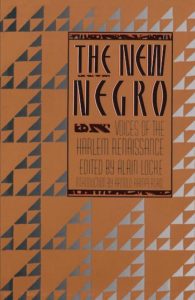
*The publication of The New Negro: An Interpretation is celebrated on this date in 1925. This is an anthology of fiction, poetry, and essays on African and African American art and literature edited by Alain Locke.
This collection of creative efforts came from the New Negro Movement or Harlem Renaissance; literary scholars and critics consider the book to be the definitive text of the movement. "The Negro Renaissance" included Locke's title essay, "The New Negro," as well as nonfiction essays, poetry, and fiction by writers including Countee Cullen, Langston Hughes, Zora Neale Hurston, Claude McKay, Jean Toomer, and Eric Walrond.
The New Negro: An Interpretation dives into how Blacks sought social, political, and artistic change. Instead of accepting their societal position, Locke saw the new negro as championing and demanding civil rights. In addition, his anthology sought to change old stereotypes. It replaced them with new visions of black identity that resisted simplification—the essays and poems in the anthology mirror real-life events and experiences of the early 20th century. The anthology reflects the voice of middle-class African Americans who wanted equal civil rights like their white, middle-class counterparts. Also, some writers, such as Langston Hughes, sought to give the lower working class a voice.
The release of The New Negro and the writing and philosophy laid out by Locke were met with broad support. However, not everyone agreed with the New Negro movement and its ideas. Some criticized the author selections, specifically Eric W. Reader, who wrote the collection of short stories “Tropic Death" (1926). He found Locke's selected “contemporary black leaders inadequate or ineffective in dealing with the cultural and political aspirations of black masses." Others, like Black academic Harold Cruse, even found the term New Negro “politically naive or overly optimistic.” Even some modern late 20th-century authors like Gilbert Osofsky were concerned that the ideas of the New Negro would go on to stereotype and glamorize black life.
Still, Locke would continue defending the idea of the New Negro. Legacy. After Locke published The New Negro, the anthology seemed to have served its purpose in trying to demonstrate that African Americans were advancing intellectually, culturally, and socially. This was important in a time like the Jim Crow era when most whites still looked down upon Blacks. They did not get the same respect as whites, which was changing. The publication of The New Negro was able to help many of the authors featured in the anthology get their names and work more widely known. The publication became a rallying cry to Blacks to try and join the up-and-coming New Negro movement at the time. The New Negro was also instrumental in making strides toward dispelling negative stereotypes associated with African America.
Locke’s legacy sparks a reoccurring interest in examining African culture and art. Not only was Locke's philosophy critical during the Harlem Renaissance period, but today, researchers and academia continue to analyze Locke's work. Locke’s anthology The New Negro: An Interpretation has endured years of reprinting from 1925 until 2015. His anthology has been reprinted in book form nearly thirty-five times since its original publication in 1925.
Beyond Locke’s work being reprinted, his influences extend to other authors and academics interested in Locke’s views and philosophy of African culture and art. Author Anna Pochmara wrote The Making of the New Negro. Journal articles by Leonard Harris, Alain Locke and Community, and Identity: Alain Locke’s Atavism. Essays by John C. Charles What was Africa to him?: Alain Locke in the book New Voices on the Harlem Renaissance. Locke’s influence on the Harlem Renaissance encouraged artists and writers like Zora Neale Hurston to seek inspiration from Africa. Artists Aaron Douglas, William H. Johnson, Archibald Motley, and Horace Pippin created artwork representing the “New Negro Movement” influenced by Locke’s anthology.